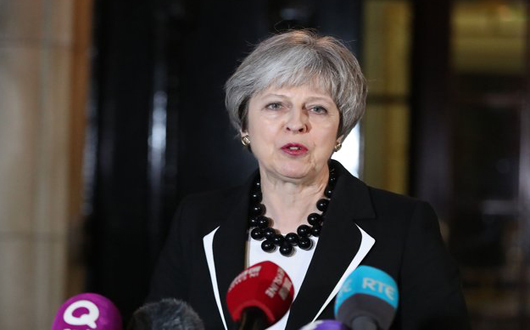LONDON, Sept 22, 2018 (BSS/AFP) – European Union leaders used a summit in
Salzburg this week to reject British Prime Minister Theresa May’s plan for
the economic relationship between the two sides after Brexit.
May says her project is the only way to protect trade ties when Britain
leaves the EU’s single market and customs union, and fulfil the vow by all
sides to keep the Irish border open.
But the EU argues it would threaten the principles of its single market,
while eurosceptics in Britain say it would undermine Brexit by binding London
to the bloc’s rules long after it leaves.
May is constrained by her own red lines: to end the free movement of
workers from the EU, to allow Britain to strike external trade deals and to
leave the jurisdiction of the European Court of Justice.
She has also agreed with Brussels that there will be no physical checks on
the land border between British Northern Ireland and EU member Ireland.
The EU has proposed a Norway-style membership of the single market or a
wide-ranging free trade agreement, with a special deal for Northern Ireland.
Time is running out to reach a compromise, raising the possibility Britain
could leave in March without any deal at all.
– May’s ‘Chequers’ plan
Under a plan agreed by May’s ministers at her Chequers country retreat in
July, Britain would maintain a “common rulebook” with the EU for goods to
ensure smooth cross-border trade in manufacturing and agricultural and food
products.
It suggests Britain maintain high regulatory standards in areas such as
the environment and workers’ rights, and commit to common rules on state aid.
But London also wants to be able to sign its own trade deals with other
countries, which could mean imposing different tariffs on products from
outside the EU.
To resolve this, it proposes to use technology to apply British tariffs to
goods intended for Britain, and the EU’s tariffs on those intended for the
bloc.
– The Norway option –
Energy-rich Norway opted against joining the EU in 1994, choosing instead
to enter the European Economic Area (EEA) which gives it all the benefits of
the single market.
But it has no say in the rules and must adhere to the EU’s four freedoms:
free movement of goods, capital, services and persons with its fellow
members.
The big advantage for Britain if it became a member of the EEA would be
that its financial hub in London remains undisturbed.
But critics say it would leave Britain a hostage to EU rules and unable to
limit migration.
– Canada ‘plus plus plus’ –
The EU’s recent accord with Canada, the Comprehensive Economic and Trade
Agreement (CETA), is considered a blueprint for the EU’s trade deals going
forward.
The deal touches on all aspects of the economy, including health and
safety norms, not just the usual cuts to tariffs and import quotas.
Both parties would negotiate, sector by sector, an agreed level of
regulatory cooperation, with London especially keen for closely aligned norms
for finance, aviation and autos.
In reality, such a deal between Britain and the EU would mean a
significant distancing between economies which are now perfectly aligned with
zero tariffs.
Future trade barriers could increase costs for certain sectors and may
require customs checks, which poses a problem for the Irish border.
Many Brexit supporters in Britain back this option, but May says it would
still require separate arrangements for Northern Ireland, which could
undermine the integrity of the UK.
– WTO rules –
If no other deal is agreed, Britain will revert to “third country” status
in the eyes of the EU, with trade relations administered according to the
rules of the World Trade Organisation.
The EU’s default position at the WTO involves tariffs and increased
barriers that could cripple the seamless supply chains that connect Britain
and the EU.
While the EU’s average tariff rate for third countries is low — around
1.5 percent — they are bigger in certain strategic sectors: for cars, the
rate is 10 percent.
It is unlikely that British products could enter the EU without further
checks at the border, while the situation would likely grow more complex as
regulatory differences widened over time.



